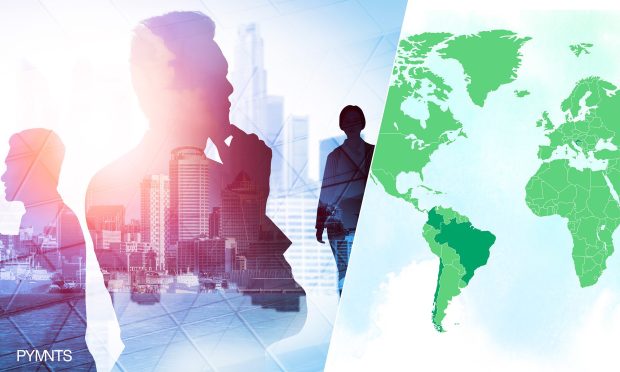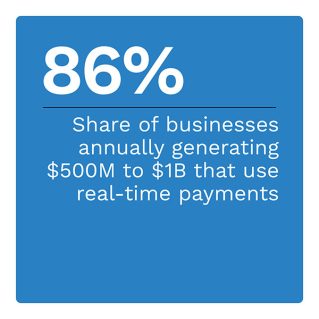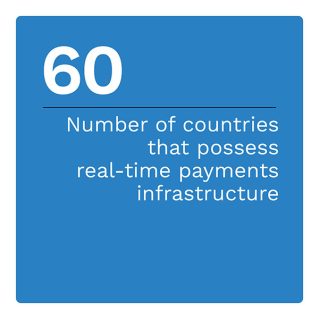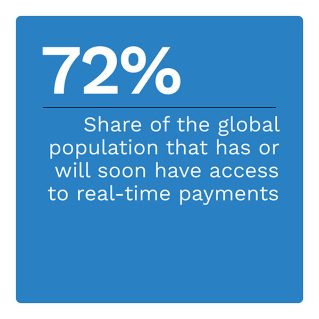The Impact of Real-Time Payments on GDP Growth in Emerging Markets

Real-time payments have become indispensable for the global economy, with a previous PYMNTS study finding that 86% of businesses generating annual revenues between $500 million to $1 billion using this transaction method.  The benefits of real-time payments are self-evident: Half of the businesses surveyed reported improved cash flow management capabilities, and 32% enjoyed improved transparency in the payments process.
The benefits of real-time payments are self-evident: Half of the businesses surveyed reported improved cash flow management capabilities, and 32% enjoyed improved transparency in the payments process.
Currently, more than 60 different countries possess a real-time payments infrastructure, with experts projecting that approximately 72% of the global population has or will soon have access to real-time payments. The exact nature of each county’s real-time payments scheme varies greatly, however, as some countries are new to the instant payments space while others have spent a decade developing a system, sometimes with government backing.
sometimes with government backing.
Brazil, for instance, officially launched the current version of Pix at the end of 2020, and 6 out of 10 Brazilians use it regularly for everyday needs. In percentage terms, Brazil’s GDP will have the highest growth facilitated by real-time payments of any country on Earth. The year 2021 saw real-time payments comprise 5.3% of its total payments volume.
 In contrast, Chile’s real-time payments system is nearly 15 years old and has seen a relatively low level of use, as the country’s economy remains largely cash based. The government is attempting to accelerate real-time payments volume by decentralizing the digital payments network to stimulate competition.
In contrast, Chile’s real-time payments system is nearly 15 years old and has seen a relatively low level of use, as the country’s economy remains largely cash based. The government is attempting to accelerate real-time payments volume by decentralizing the digital payments network to stimulate competition.
Countries around the world are undertaking their own real-time payments journeys — either by themselves or with international organizations — and their native economy, culture and political atmosphere uniquely shapes each one.
The “Real-Time Payments World Map,” a collaboration with The Clearing House, examines the state of real-time payments across countries around the globe and how they compare to their counterparts, as well as total payments volume in recent years.


